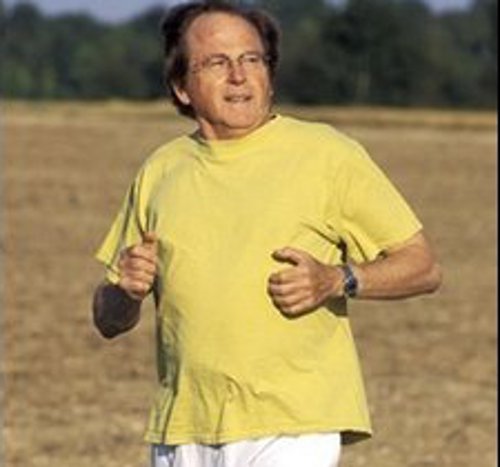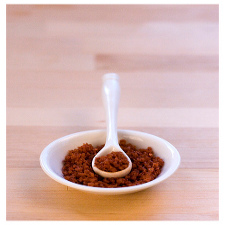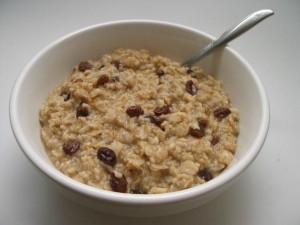 Turning 40 can be a psychological hurdle for many people, a magic number that symbolizes the end of their youthful years and the transformation into full adulthood. Most people upon turning 40 battle that transition, holding onto those youthful days by planning outrageous parties on their 40th birthday, maybe purchasing some lavish gift, or planning an extreme sport or event, anything to feel young again.
Turning 40 can be a psychological hurdle for many people, a magic number that symbolizes the end of their youthful years and the transformation into full adulthood. Most people upon turning 40 battle that transition, holding onto those youthful days by planning outrageous parties on their 40th birthday, maybe purchasing some lavish gift, or planning an extreme sport or event, anything to feel young again.
Yet, biologically, their bodies are changing when they reach so-called “middle age.” The body’s metabolism begins to slow, reactions are not quite as sharp, and, psychologically, they feel the difference by not participating in as many intense physical activities as when we were younger. Many have family obligations and spend “free” time spent carting youngsters from activity to activity and living a more of a sedentary lifestyle than they ever thought possible.
All the while, though, the calorie intake has not changed as much as their bodies and lives have and, soon, the scale begins to tip upward, leaving them with a fight that is difficult and frustrating to win. However, battling weight gain in your 40′s is not an impossible feat and you don’t have to spend half your time in the gym to accomplish your goal.
Maximize Your Metabolism
 Remember when you were 20 years old and you could eat whatever you want when you wanted? As you grow older, fatigue can be a real problem, not just from the stress of your daily activities and responsibilities, your job, kids, house, finances, but from the real physiology of trying to balance your blood sugar levels.
Remember when you were 20 years old and you could eat whatever you want when you wanted? As you grow older, fatigue can be a real problem, not just from the stress of your daily activities and responsibilities, your job, kids, house, finances, but from the real physiology of trying to balance your blood sugar levels.
Ideally, you want to avoid the peaks and valleys in your daily energy that comes from fluctuations in blood sugar. One recommendation is to eat with more frequency while consuming less at each sitting. To maintain those energy levels, the rule of thumb is to never go more than three or four hours between meals.
Eating light will also save you from those midday troughs when you go foraging for a pick-me-up from the vending machine filled with sugar and calories, or reach for another cup of caffeine. Instead of that steak and cheese hoagie for lunch, try something lighter and faster as an alternative, then take a quick walk around the parking lot.
A quick snack late in the afternoon will help stave off temptation to over-eat at dinner. The goal with this method is to make your system feel it’s satisfied even though you are taking in a lesser amount of calories. Less caloric intake will also result in less weight gain since you won’t have to burn off as much to maintain or lose weight.
Sometimes, though, weight can stem from a metabolic issue. According to the Mayo Clinic, millions of people suffer from thyroid diseases with most over the age of 50 and female. An underactive thyroid – termed as  When can eating more food help you lose weight? Instead of dieting, how about trying to eat more of the right food. When you eat certain types of food, the act of digesting that food can actually help you burn calories – something termed “negative calorie effect.”
When can eating more food help you lose weight? Instead of dieting, how about trying to eat more of the right food. When you eat certain types of food, the act of digesting that food can actually help you burn calories – something termed “negative calorie effect.”
Raw Fruits and Vegetables – When you eat a raw carrot or apple, for example, you might consume 80 or so calories. In order to digest that piece of fruit or veggie, you’ll have to burn 90 or so calories. This “negative calorie effect,” which actually helps you burn calories making it much easier to maintain your weight and even lose weight if you are on a weight loss plan.
The key is to eat these things raw – not roasted or boiled or steamed. Also, citrus fruits such as oranges, lemons, and grapefruit are high in Vitamin C and help burn off body fat, allowing fat to be easily flushed-out of your system.
Oatmeal – Loaded with fiber, oatmeal has been linked not only to weight loss, but to heart health. Fiber has been known to prevent the body from storing fat while decreasing your appetite. Oatmeal, if eaten several hours before a workout, can actually increase your energy level, allowing you to have a better, longer-lasting workout.
Plain oatmeal with natural oats is preferable to the flavored varieties, if you can stomach eating the plain stuff on a regular basis. No use adding oatmeal to your diet if you can’t handle eating it, or if you plan on dumping teaspoons of sugar on top. Its best to flavor it with raw fruit such as strawberries or berries and, if you need a sugar touch, add some natural honey.
Low-Fat Dairy – We’re talking low-fat, not ice cream or whole milk, but low-fat yogurt, cheese, and milk. These types of low-fat dairy products tend to break down fat cells faster, tend to suppress a hormone named calcitrol that makes fat cells grow larger, and can also help suppress appetite.
Other foods to use to help burn fat faster include raw nuts, fish such as salmon and tuna, and even spices such as cinnamon, garlic, and hot mustard. Lean proteins such as lean chicken and lean meats can also help burn fat faster in your system.
The trick here is to add these foods to your diet without thinking you’re on a diet. Changing your daily dietary intake is a lifelong commitment but, by eating foods that will help you maximize your energy and burn the fat that is already stored in your body, you can begin the process of losing weight without depriving yourself of food.
Adjusting to 40
So you are in your 40′s. You can’t shrink from that fact. You are going to grow older, and if you are lucky enough to do so, stop looking back to when you were in your 20’s and think about that person you are now.
You may have added some extra pounds and, with the guilt, you have tried dieting without much success. Maybe you bought yourself a gym membership and have raced on the treadmill and hit the weights hard, finding only sore muscles and not a lot to show for your efforts. In other words, at your age, drastic changes just don’t work.
Your metabolism has probably evened-out and tends to be immune to quick overhauls. Instead, make slow, steady changes. Change your diet to include the energy foods outlined earlier. Take a walk every day during your lunch break and then start adding more exercise.
Focus on raising your metabolism and giving yourself energy and, remember, you’re 40, but you aren’t dead. You want to give yourself the best chance to stay healthy, stay fit, and be around to enjoy the next 40 or so years of your life.